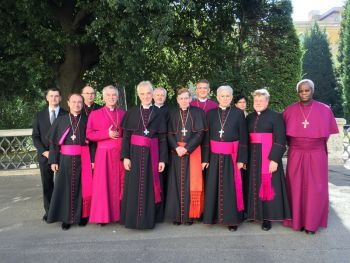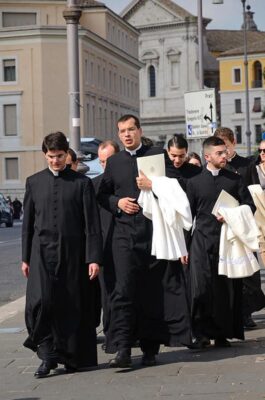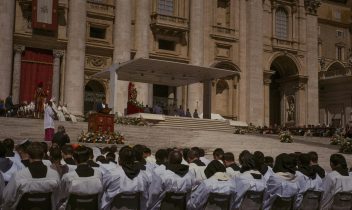No products in the cart.
Return To Shop
What is a bishops cassock?

In the world of ecclesiastical garments, the bishop cassock holds a prominent position. This article aims to shed light on the essence and symbolism of the bishop cassock. From its historical origins to its contemporary significance, we will explore the multifaceted aspects of this distinctive attire worn by bishops in various Christian traditions. A bishop’s cassock is a long, flowing robe worn by bishops during religious ceremonies. It holds a deep-rooted historical background and carries great significance within the clergy. Let’s delve into the various aspects that make the bishop’s cassock an essential part of religious traditions. Shop Here….
Background of the Bishop Cassock
The origins of the bishop’s cassock can be traced back to ancient times. In the early days of Christianity, the clergy adopted the clothing styles prevalent in the Roman Empire. Over time, these garments evolved to reflect the religious significance of the clergy’s role. The cassock became a distinctive symbol of authority and piety, particularly for bishops. The roots of the bishop cassock can be traced back to ancient times. Early Christian clergy often wore long robes called tunics, which were derived from the Roman toga. Over the centuries, these tunics underwent modifications, eventually evolving into the cassocks we recognize today. The bishop cassock, specifically, developed as a distinct garment to signify the authority and spiritual role of a bishop within the Church. Shop Here….
The Design of Bishop Cassock and Characteristics
The bishop cassock is characterized by its ankle-length cut and long sleeves. It is typically made of fine fabric such as wool or silk, denoting the bishop’s elevated status within the clergy. The color of the cassock varies depending on the tradition and region. In Western Christianity, black is the predominant color, while in Eastern Christianity, various hues, such as purple, red, or white, may be used to represent different liturgical seasons or occasions. Shop Here….
The Symbolism and Spiritual Significance
The bishop cassock serves as a visual representation of the bishop’s role as a shepherd and spiritual guide. Its dark color, often black, symbolizes the bishop’s humility and renunciation of worldly pursuits. The flowing nature of the cassock signifies the bishop’s willingness to serve and embrace the responsibilities entrusted to them. Moreover, the long sleeves of the cassock are seen as a symbol of the bishop’s nurturing and protective nature towards their flock. Shop Here….
Authority and Dignity
Wearing the bishop cassock is a ceremonial act that conveys the authority and dignity associated with the episcopal office. The cassock distinguishes a bishop from other clergy members, signifying their leadership and hierarchical position within the Church. It serves as a visual reminder of the bishop’s spiritual jurisdiction, bestowed upon them to guide and oversee their diocese. Shop Here….
Practical Considerations
Beyond its symbolic significance, the bishop cassock also serves practical purposes. The long sleeves and length provide warmth and protection, particularly during liturgical ceremonies held in colder climates. Additionally, the loose-fitting design allows ease of movement, enabling the bishop to navigate various liturgical rituals and processions with grace and dignity.
Variations across Christian Traditions
While the general concept of the bishop cassock remains consistent, there are variations in style and design across different Christian traditions. For example, Eastern Orthodox bishops may wear a phelonion, a sleeveless outer cassock, over their inner cassock, while Roman Catholic bishops may opt for a shorter cape known as a mozzetta. These variations reflect the rich diversity within Christianity and the distinct practices of each tradition. Shop Here….
Modern Usage and Revisions
In the modern era, the bishop cassock continues to be worn during liturgical ceremonies and formal occasions. However, some adaptations have emerged to accommodate practicality and regional preferences. For instance, bishops in warmer climates may opt for lighter fabrics or shorter versions of the cassock to suit the local environment. Nonetheless, the core symbolism and reverence associated with the bishop cassock remain unchanged. Shop Here….
The bishop’s cassock carries several symbolic meanings. Its design, typically black or dark in color, signifies humility and penance. The color also represents the clergy’s detachment from worldly desires and their commitment to serving a higher purpose. The cassock’s flowing nature symbolizes the bishop’s readiness to embrace the spiritual journey and lead their congregation with grace and wisdom. Shop Here….
Importance in Religious Ceremonies
During religious ceremonies, the bishop’s cassock holds a prominent role. It signifies the bishop’s position as a spiritual leader and serves as a visual representation of their authority within the church. Wearing the cassock during liturgical celebrations emphasizes the bishop’s connection to tradition and their responsibility to guide the faithful.
In conclusion, the bishop’s cassock holds immense historical, symbolic, and ceremonial importance within religious contexts. Its significance as a representation of authority, humility, and spiritual leadership makes it an essential part of a bishop’s attire. Understanding the role of the bishop’s cassock enhances our appreciation for the traditions and rituals associated with religious ceremonies.













Add comment
You must be logged in to post a comment.